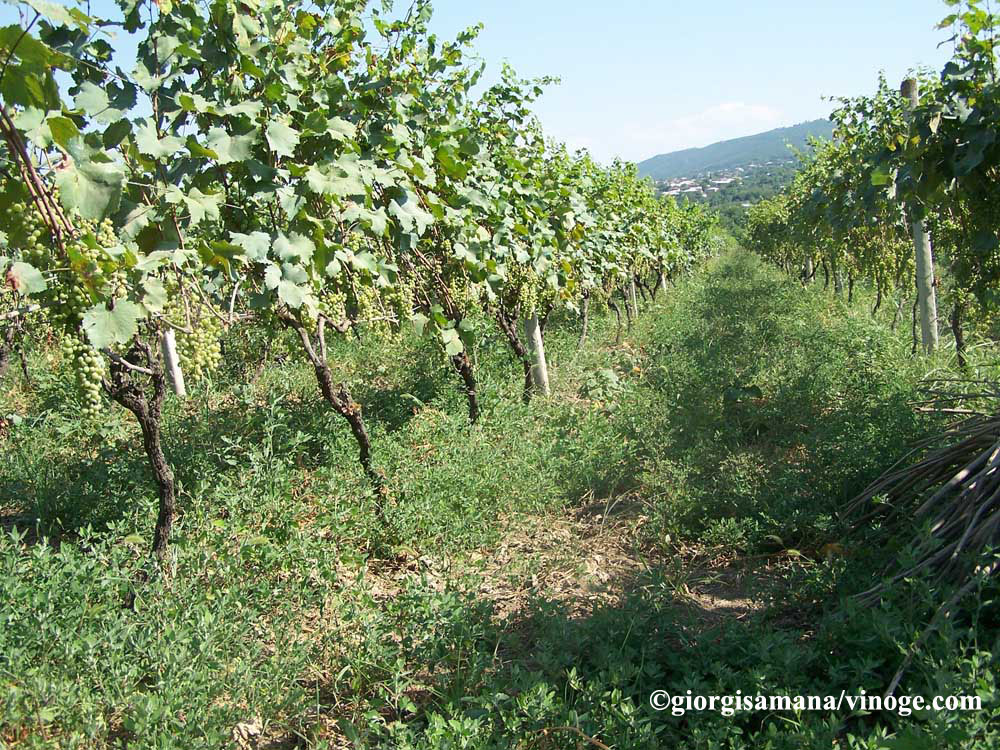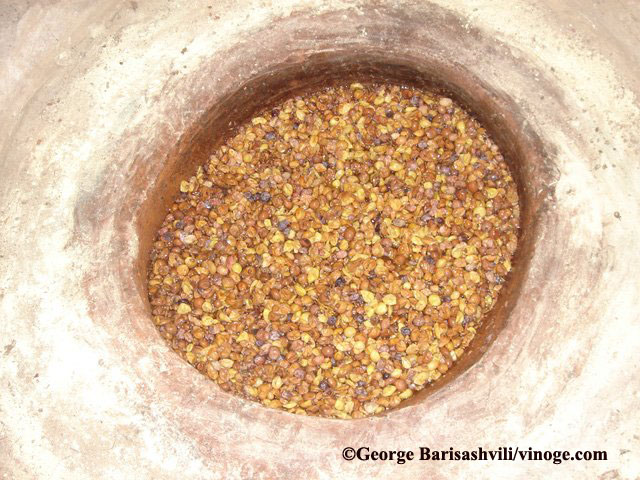
by Malkhaz Kharbedia
Kakheti is the region of proven viniculture quality in Georgia. It boasts diversity of top quality wines made from the local authentic grape varieties, unusually well-suited climate, topography, and centuries-long exceptional wine-making technologies. On a national scale, Kakheti occupies the biggest territory (65%) of Georgia’s vineyards with almost 80% of grapes gathered here. Main white grape varieties grown in the region include Rkatsiteli, Kakhuri Mtsvane, Khikhvi and Kisi. Most significant among the red ones is Saperavi, a variety with the same status as Pinot Noir in Burgundy and Sangiovese in Tuscany. International varieties grown here are Cabernet Sauvignon, Sauvignon Blanc, Chardonnay, and Muscat and rare indigenous varieties are Mtsvivani, Tsiteli Budeshuri, Grdzelmtevana, Kumsi, Mirzaanuli, Ikhaltos Tsiteli and Kharistvala.
During years this important winemaking region was divided according to the changing, often not completely perceivable principles but traditionally it was usually divided into four main parts: 1) Right bank of River Alazani from Akhmeta to Kardenakhi with the micro-zones of Akhmeta, Ikhalto, Kurdghelauri, Tsinandali, Vazisubani, Mukuzani, Gurjaani, Kardenakhi; 2) The River Alazani right bank from Anaga to Dedoplistskharo with Anaga, Tibaani, Bodbe-Magharo, Dedoplistskharo micro-zones; 3) The River Alazani left bank from Pankisi to Lagodekhi with Pankisi, Alavani-Maghraani, Napareuli, Shilda-Eniseli, Khvareli micro-zones, and 4) so-called outer Kakheti with southern slopes of Gombori from Sartichala to Chalaubani that includes the Khashmi, manavi-sagarejo, Kachreti and Chalaubani micro-zones.
Thanks to good geological legacy and location Kakheti ensures excellent vintages for quality wines. The climate here is moderately humid with dry, hot-but-not-scorching summers and cold winters. The region is lightly windy with occasional north-west winds making winters cold and summers rainy. Winds blowing from south bring foggy weathers in winters and droughts in summers. The vineyards are planted 250-800 meters from the sea level. Historically, the best micro-zones in Kakheti are Kardenakhi, Mukuzani, Tsinandali, Manavi, Khashmi, Napareuli and Kindzmarauli.
Traditional Kakhetian winemaking technique is generally regarded as unequaled. Once in the presses, the grapes are crushed without harming stones and the running juice gets into buried, ideally clean amphoras or, as it is known in Georgia, Kvevri. Later the winemakers add stones and skin to the juice in Kvevri and keep it there for around ten days stirring it four times a day. The stirring process is extremely important for the balanced fermentation that usually lasts for twenty-five, sometimes up to forty days. When the grape stones and skins start to move up to the surface, Kvevri is sealed but not yet hermetically (to allow secondary fermentation). They get hermetically sealed for four months in December. In March, wine juice is “freed” from stones and skins. The latter are extremely important for making the white Kakhetian wine for as the local winemakers assume, stones and skins are both “givers and takers.” They are ideal natural philters that give the juice lots of good properties but can also easily spoil it in case of the over-use. The same procedure of freeing the juice from the stones and skins takes place by late May or early June. Then the wine rests for a year. During this time it only undergoes the monthly check-up. The above mentioned wine-making technology belongs to a winemaker from Kardenakhi but historical sources also include various other wine-making receipts.

Kvevris are different subject altogether. Many families in Kakheti (and also in other regions of Georgia) usually own special places beside their main houses called marani, where they make wine in large buried clay Kvevris, a perfect temperature keeper vessels thanks to the cooling properties of underground streams. Kvevris don’t only protect the wine but they also contribute to the entire fermentation process. According to Giorgi Barisashvili, a Georgian oenologist, the fact that the juice in the Kvevri isn’t affected negatively by skins and stones is largely depended on its cone-like shape. When skin and stones sink they are covered by coating that completely isolates them from the juice. Kvevris contribute to making of powerful fire-colored Kakhetian wines full of tannins and the aroma of almond, walnut, and dry apples.
The Kakhetian winemakers also make top-quality European white wines namely in the micro-zones of Tsinandali, Gurjaani, Manavi, and Napareuli. Saperavi grape variety makes great red wines in Mukuzani, Kindzmarauli, Napareuli and Tsinandali micro-zones (some remarkable red wines are made from Cabernet Sauvignon in Teliani micro-zone). Last but not least, the region is the best for naturally semi-sweet and recently quite interesting late-harvest ice wines.
© vinoge.com








